Mexican food is popular worldwide. In fact, the website Taste Atlas ranked Mexican as #7 on their list of the worldʼs 100 best cuisines.
If you live in the US, you can find Mexican food in its traditional forms in border states like California, New Mexico, Arizona, and Texas, as well as the core of the adapted cuisine — Tex-Mex — that developed in the late 1800s in Texas. There are also many popular Mexican-style fast-food and fast-casual restaurants like Taco Bell, Del Taco, and Baja Fresh.
But what we think of as traditional Mexican food combines indigenous ingredients with influences from Spanish and other cultures. With the increased popularity of veganism, vegan Mexican cuisine has even come to the forefront, offering a fresh and healthful twist on traditional recipes — and in some cases, adhering more closely to traditional indigenous fare than the modern alternatives.
Many Mexican dishes are already vegan or vegetarian, or can easily be modified to be so. Thatʼs because Mexican cuisine, with its emphasis on fresh vegetables, beans, chili peppers, and spices, is inherently well-suited to plant-based adaptations.
So how do you replicate the flavors and dishes of Mexican cuisine at home? What ingredients are essential? And what are some Mexican dishes that you can easily make into a plant-based feast?
Regional Mexican Food
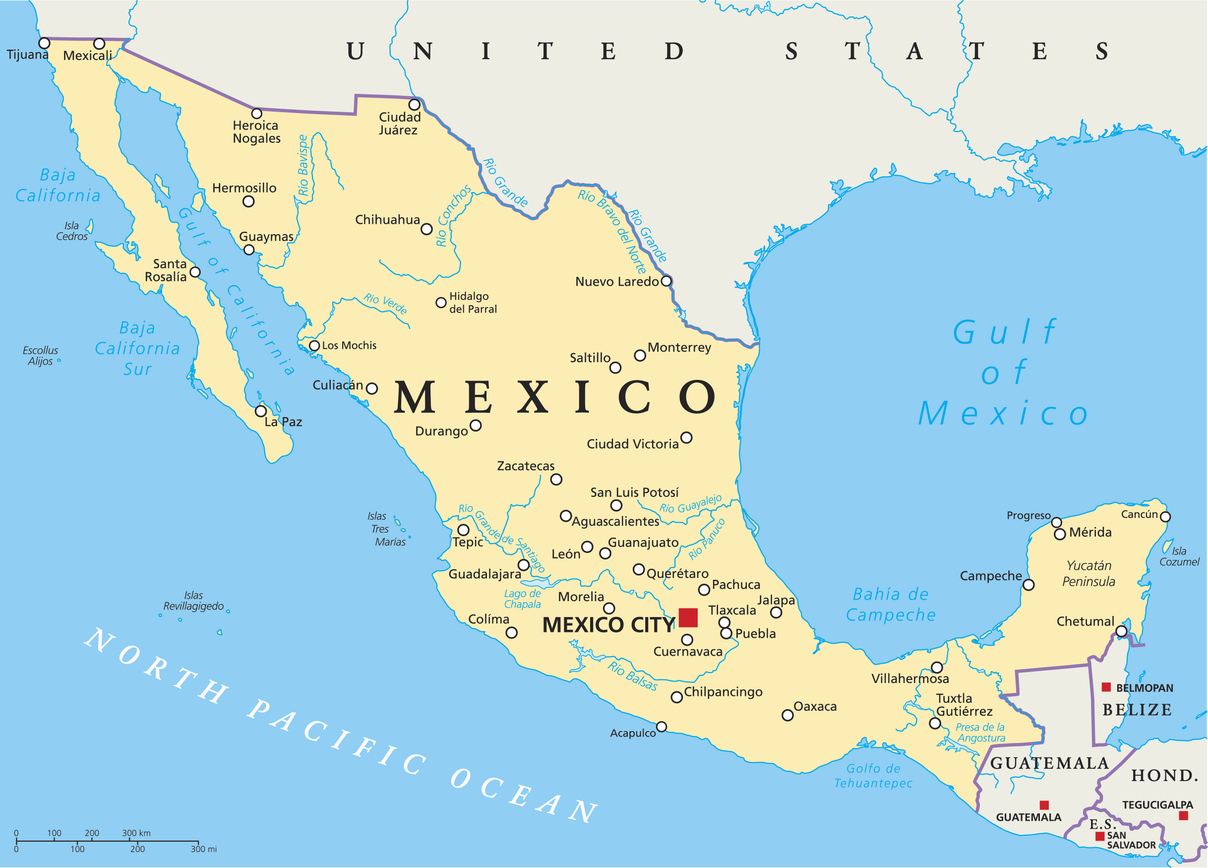
Mexican food, like many other cuisines, isnʼt uniform across the country. Mexico is over 761,600 square miles, making it the 10th biggest country in the world by land area. So itʼs no surprise that there is some variety from state to state and region to region. There are many different regional Mexican cuisines within the country, each with its own dishes, spices, and ingredients. (Mexican food in the US and other countries outside Latin America is often adapted or Westernized and doesnʼt necessarily reflect traditional Mexican dishes.)
There are eight distinct regions of Mexican cuisine with their own specific dishes, spices, and ingredients.
1. The North (Chihuahua, Sonora, Durango)
This region is known for cattle farming, so youʼll find lots of beef and cheese in its cuisine. Dishes here favor wheat over corn tortillas. And classic dishes include burritos, arrachera (a cut of steak often used in fajitas), and queso fresco.
2. The Baja Peninsula (Baja California and Baja California Sur)
This region of Mexico is sometimes lumped in with the north, but culinary-wise, itʼs more seafood-oriented, known for ceviches, fish tacos, and Caesar salad.
3. North Pacific Coast (Sinaloa, Nayarit, Jalisco)
The North Pacific Coast region features a mixture of both northern and coastal cuisine. The city of Guadalajara is the foodie center of this region, known for birria (meat stew), pozole (corn and meat soup), and aguachile (a raw seafood dish).
4. Bajio or Lowlands (Michoacan, Guanajuato, San Luis Potosi)
The cuisine of these original Spanish colonial states is known for cotija cheese, carnitas (long-cooked meat), arroz con leche, and other sweet desserts.
5. Central Mexico (Mexico City, Puebla, Hidalgo)
In urban Central Mexico, street food is popular, and the cuisine reflects its cosmopolitan nature by combining aspects of different regional cooking styles, as well as an international influence. Central Mexico is known for mole poblano (a sauce featuring hot peppers and cacao), tacos, tortas, and chiles en nogada (stuffed poblano peppers in cream sauce).
6. The South Pacific Coast (Oaxaca, Chiapas, Guerrero)
This region of Mexico has preserved its indigenous influence on cuisine from the Mayans and Aztecs. Sauces, drinks, and desserts often feature chocolate, and typical dishes include seven different types of moles (sauces), as well as enchiladas and tamales.
7. The Gulf (Tabasco and Veracruz)
In addition to the Indigenous Mexican cultural influence, Gulf cuisine also shows influences from European and Afro-Caribbean cultures. Popular dishes here include arroz a la tumbada (rice and seafood stew) and garnachas (corn tortillas topped with refried beans). One of its most famous exports is hot peppers and hot sauce, which is said to have been invented by the Aztecs.
8. Yucatan Peninsula (Campeche, Yucatan, and Quintana Roo)
The cuisine of the Yucatan was influenced by Indigenous Mayan as well as Caribbean, European, and Middle Eastern cultures. Famous dishes here include poc-chuc (grilled meat in citrus marinade), chiltomate (chili and tomato sauce), and pibil (meat wrapped in banana leaves and slow-cooked in an underground oven).
What About Tex-Mex?

Tex-Mex has also become its own style of adapted Mexican food, combining Mexican-influenced dishes with southern and southwestern American cuisine. It was largely influenced by the Tejano community (Texans with Mexican heritage).
The first popular Tex-Mex dish was chile con carne, which the so-called “Chili Queens” of San Antonio cooked for the cityʼs working class. Other classic Tex-Mex staples include nachos, fajitas, and queso dip. The cuisine tends to have more dairy than traditional Mexican dishes and is often served in large portions.
Essential Mexican Food Ingredients to Have On Hand
While Mexican cuisine is complex and varied, itʼs not hard to get started with just a few basic ingredients.
Meal Bases
The most common Mexican meal bases are rice, beans, and tortillas.
If youʼre buying canned refried beans, look for “vegetarian” on the label, as otherwise, they may have been cooked with lard.
Tortillas can be made with corn and/or wheat flour and may be soft or hard.
Protein

Traditionally, many Mexican dishes include meat such as chicken, pork, beef (including beef tongue or head), lamb, or seafood. To make Mexican dishes plant-based, you can substitute meat analogues or replace them with plant-based foods like any of the following:
- Mushrooms
- Hearts of palm
- Jackfruit
- Tofu or tempeh
- Beans and lentils
- Nuts and seeds
Cheese is used in Mexican food as well, but is more prevalent in Tex-Mex. You can use a plant-based dairy analog, make your own vegan cheese or cheese sauce, or leave it out entirely.
Vegetables
The most common veggies youʼll encounter in Mexican cooking include the following:
- Onions
- Corn
- Avocado
- Sweet and hot peppers
- Tomatoes
- Squash and squash blossoms
- Radishes
Fruit
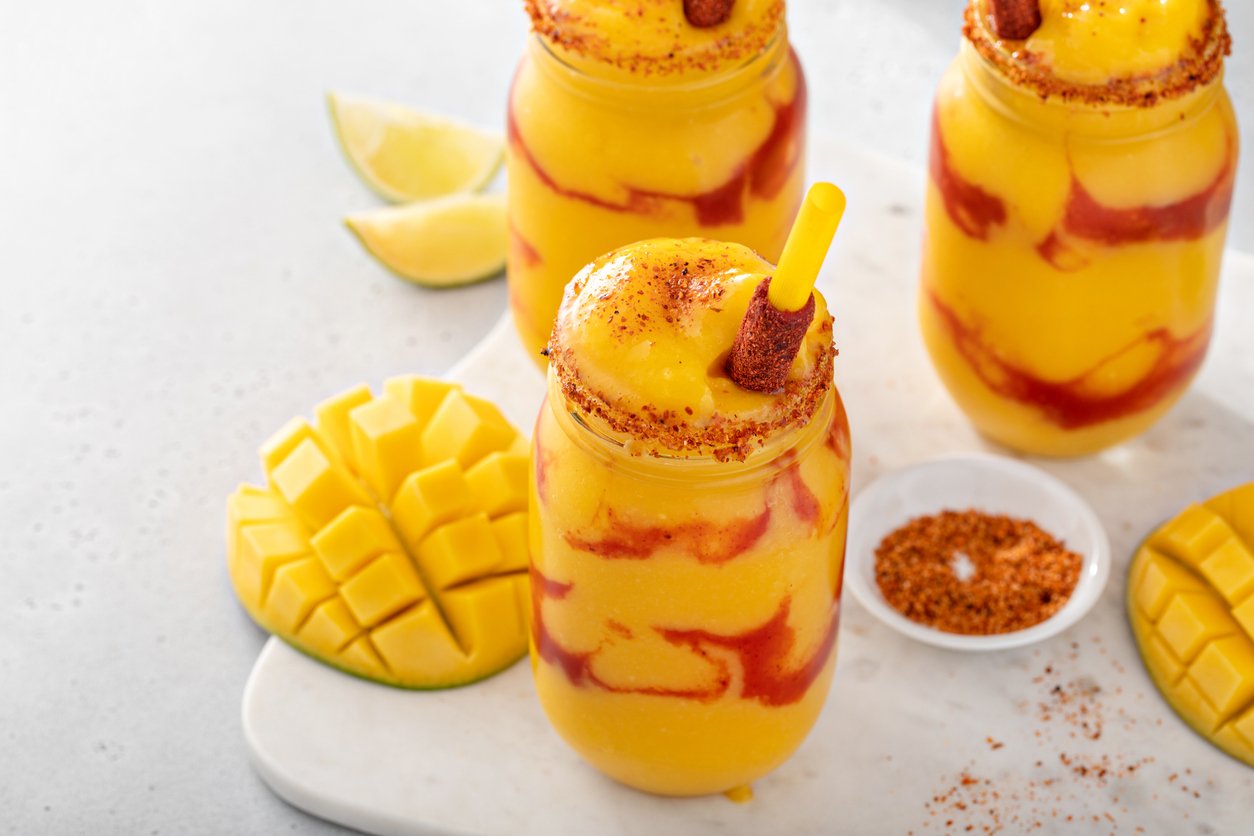
Although fruit is used less in cooking and more in snacks, desserts, and baking, there are some frequently used choices.
- Mango
- Plantain
- Pineapple
- Guayaba (guava)
- Mamey
- Papaya
- Citrus fruit like lime, orange, etc.
Condiments
Sauces and condiments are a major part of Mexican cuisine. Here are some of the biggies:
- Salsas
- Hot sauce
- Mole (a spicy chocolate-based sauce)
- Crema
- Enchilada sauce (green or red)
- Chamoy
- Guacamole
- Lime
- Tamarind paste
- Pickled onions, radishes, carrots, or jalapeños
Herbs and Spices
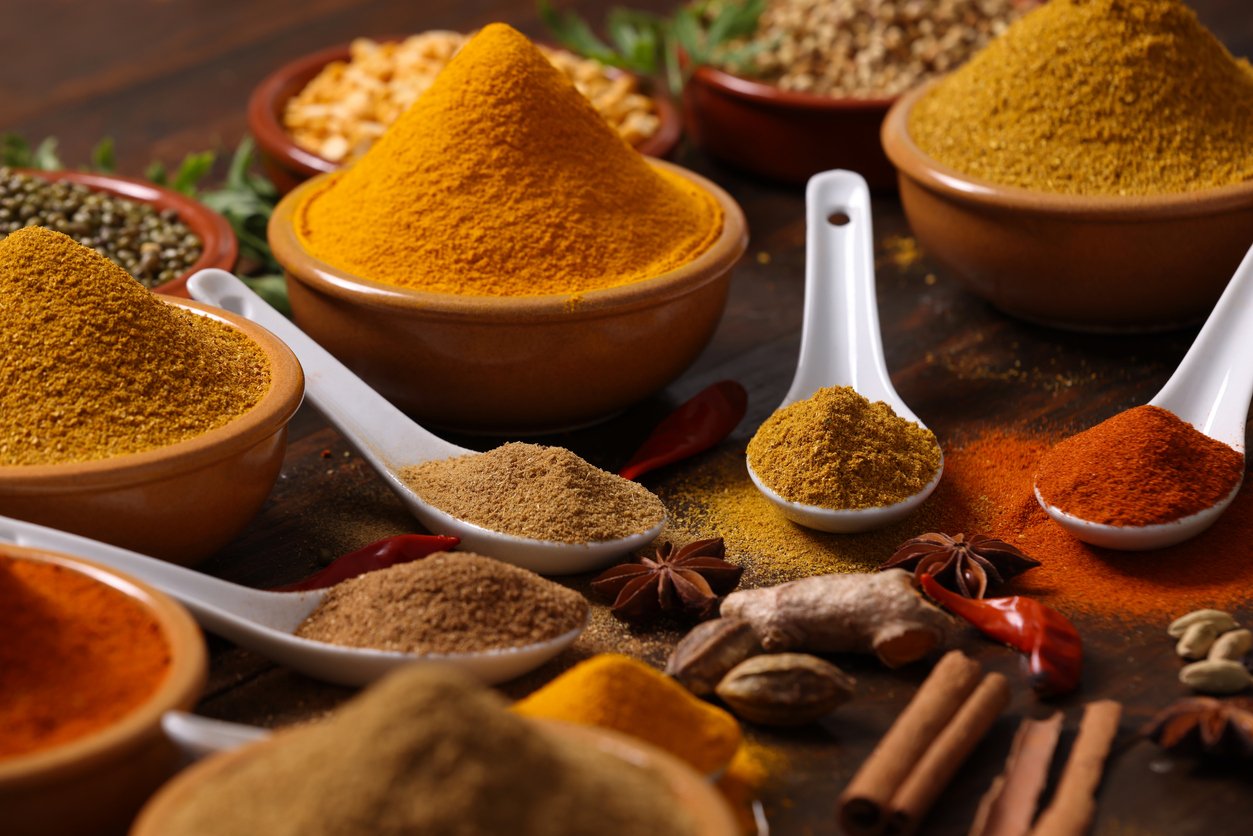
Mexican cuisines, like many others around the world, are largely defined by their unique spice profiles. Popular herbs and spices in Mexican food can include:
- Cayenne pepper
- Other hot pepper powders, pastes, and sauces
- Cinnamon
- Allspice
- Cumin
- Cilantro
- Mexican oregano
- Epazote (often cooked with beans)
Mexican Dishes That Are Already Vegan
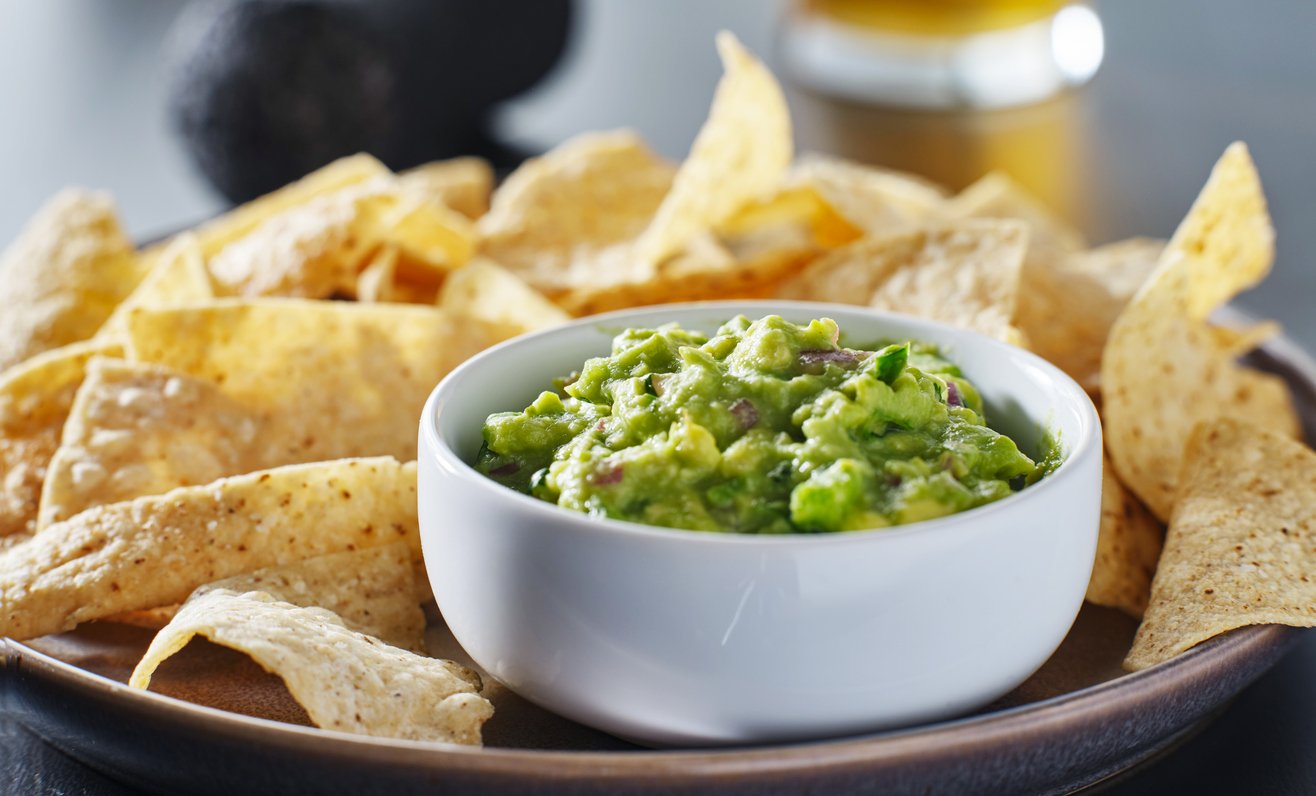
There are many Mexican dishes that require little to no substitutions, or tweaks, if you want to make them vegan. As we’ve provided appetizers, mains, and desserts, you can create multiple three-course (or more!) meals with this vegan Mexican menu sampling.
Appetizers
- Chips and salsa (many salsas and moles are vegan)
- Guacamole
- Pellizcadas (fried or baked dough with toppings) Some use lard in masa or beans; some omit the meat and come only with beans, salsa, and veggie toppings.
Mains
- Morisqueta (beans, rice, salsa) from the Bajio region
- Tacos de nopales (prickly pear cactus)
- Hongos al ajillo (garlic mushrooms) from Oaxaca
- Tacos de papas (potato tacos) Hold the cheese; some restaurants mix the potatoes with milk.
Desserts
- Paletas (fruit popsicles)
- Chamoyada (a drink of brined fruit mixed with chili and lime)
- Churros (originally a Spanish dessert) Some are made without dairy or eggs, but theyʼre usually fried.
- Alegrías (amaranth seed bars)
Ways to Easily Veganize Mexican Dishes
Tamales can be vegan by leaving lard out of the dough and using plant-based broth in place of chicken stock. You can keep it simple with blind tamales (cornmeal dough steamed inside of corn husks with no other filling), or get creative and fill the husks with pineapples, mushrooms, and other fresh produce. You can also add meat and dairy analogs.
Tacos, burritos, tostadas, enchiladas, and other dishes can be made with meat or dairy analogs, or you can just use beans, mushrooms, and unprocessed or lightly processed veggies. For aguachiles and ceviche, substitute vegan fish or shrimp, or try hearts of palm for the seafood.
Use plant-based fillings to stuff chili peppers. Esquite or elote (freshly cooked corn topped with condiments, either on or off the cob) can be made with vegan mayo, butter, and cheese, or leave them off and use other plant-based toppings of your choice.
Many other dishes can also be made by just leaving out the meat or dairy.
And if youʼre looking for inspiration (or just have a hankering for Mexican food), you can find a number of vegan Mexican restaurants in Mexico and the US. Check out Vegan Food Questʼs “Vegan Guide to Mexico” or search for vegan and vegetarian Mexican food near you using the Happy Cow website.
Vegan Mexican Recipes
Rather than aiming for complete authenticity, weʼre sharing our plant-based takes on traditional Mexican cuisine. Theyʼve all been created with much love and respect, and are incredibly delicious! Make them during the week, or prepare a vegan Mexican feast for Cinco de Mayo or another special occasion.
1. Aguachile Verde
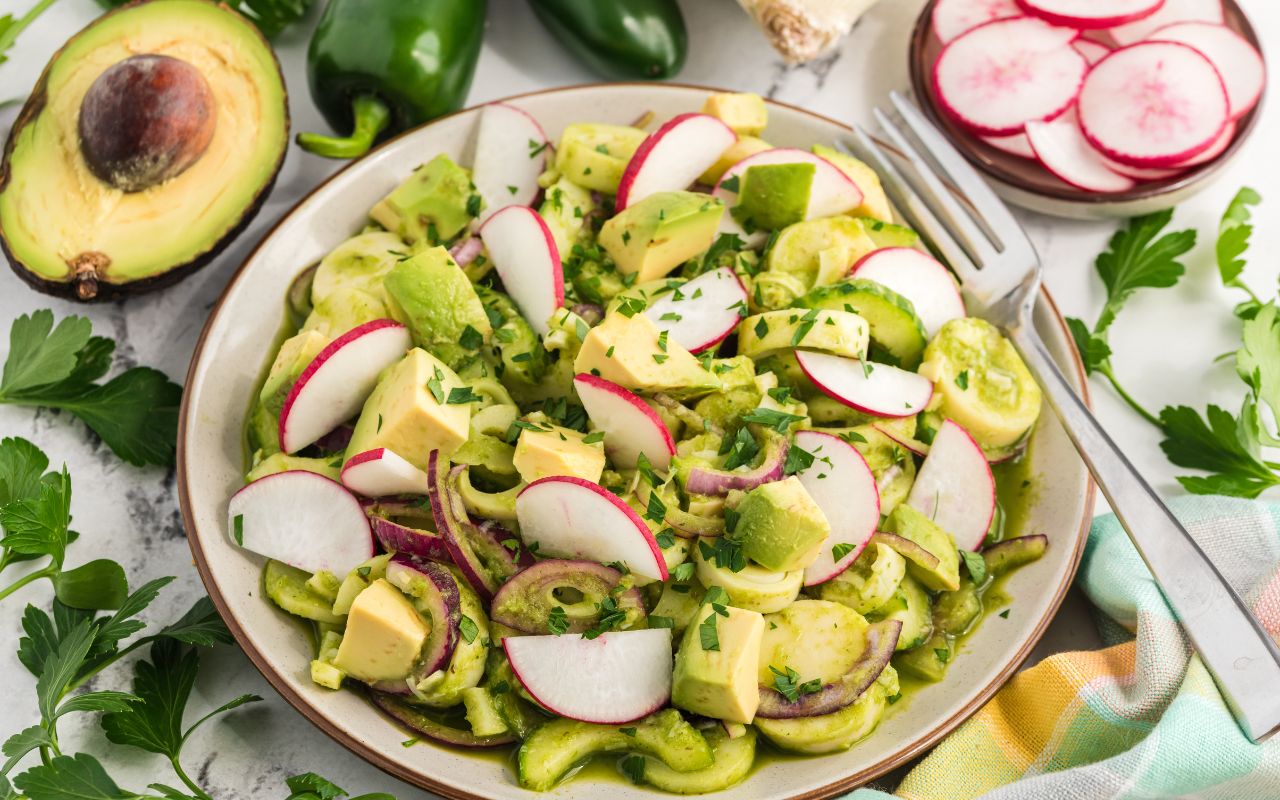
This Mexican-inspired dish pays homage to the beloved seafood dish aguachile from the North Pacific Coast. This vibrant, plant-based version marries the crunch of hearts of palm, cucumber, red onion, and radish with the creamy texture of avocado, all enhanced by the brightness of lime and fresh cilantro. At the core of this vegan Mexican dish lies the Salsa Verde — a zesty marinade of tangy lime juice, onion, garlic, spicy jalapeño, serrano chilies, and cilantro, with a dash of kelp granules, adding a hint of the sea. Serve up your aguachile with whole grain tortilla chips or tostadas for a vegan Mexican dish thatʼs sure to impress with its bold flavors and spicy kick.
2. Vegan Pozole

A cherished dish also from the North Pacific Coast, pozole is known for its warming and satisfying qualities. Our vegan take on this beloved classic features a robust stock made from dried ancho chilies, garlic, and white onion. The addition of mushrooms and black beans infuses the soup with both heartiness and protein, while ground cumin, dried oregano, and bay leaves deepen the flavor profile. The hominy, notable for its distinctive texture, simmers in a savory vegetable broth, absorbing the aromatic spices. Topped with fresh, crunchy vegetables like cabbage, radish, onion, and jalapeño, this hearty soup celebrates Mexican culture, nutritional richness, and the versatility of plant-based ingredients.
3. Vegan Chiles en Nogada
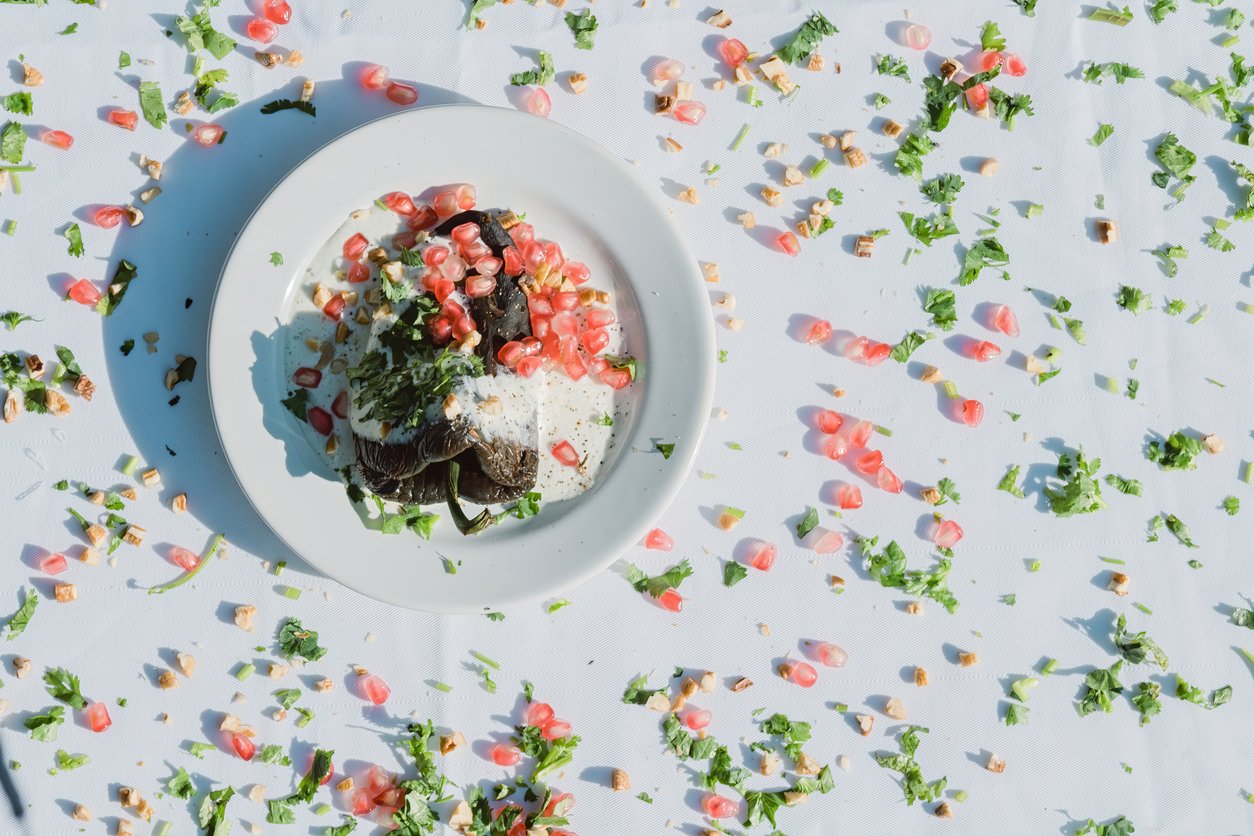
Chiles en Nogada is known as Mexicoʼs most patriotic dish, and for good reason! This vegan version offers a twist on the festive Mexican dish traditionally served in celebration of Mexican Independence Day. Organic poblano peppers are filled with a flavorful blend of tempeh, onions, garlic, and fruits like pineapple, apples, pears, and plantains and seasoned with spices such as cinnamon and cloves. The peppers are topped with a creamy walnut sauce and garnished with pomegranate seeds and parsley, mirroring the Mexican flagʼs colors. Vegan Chiles en Nogada is a wonderful way to pay homage to a beloved culinary tradition.
4. Spinach and Mushroom Enchiladas
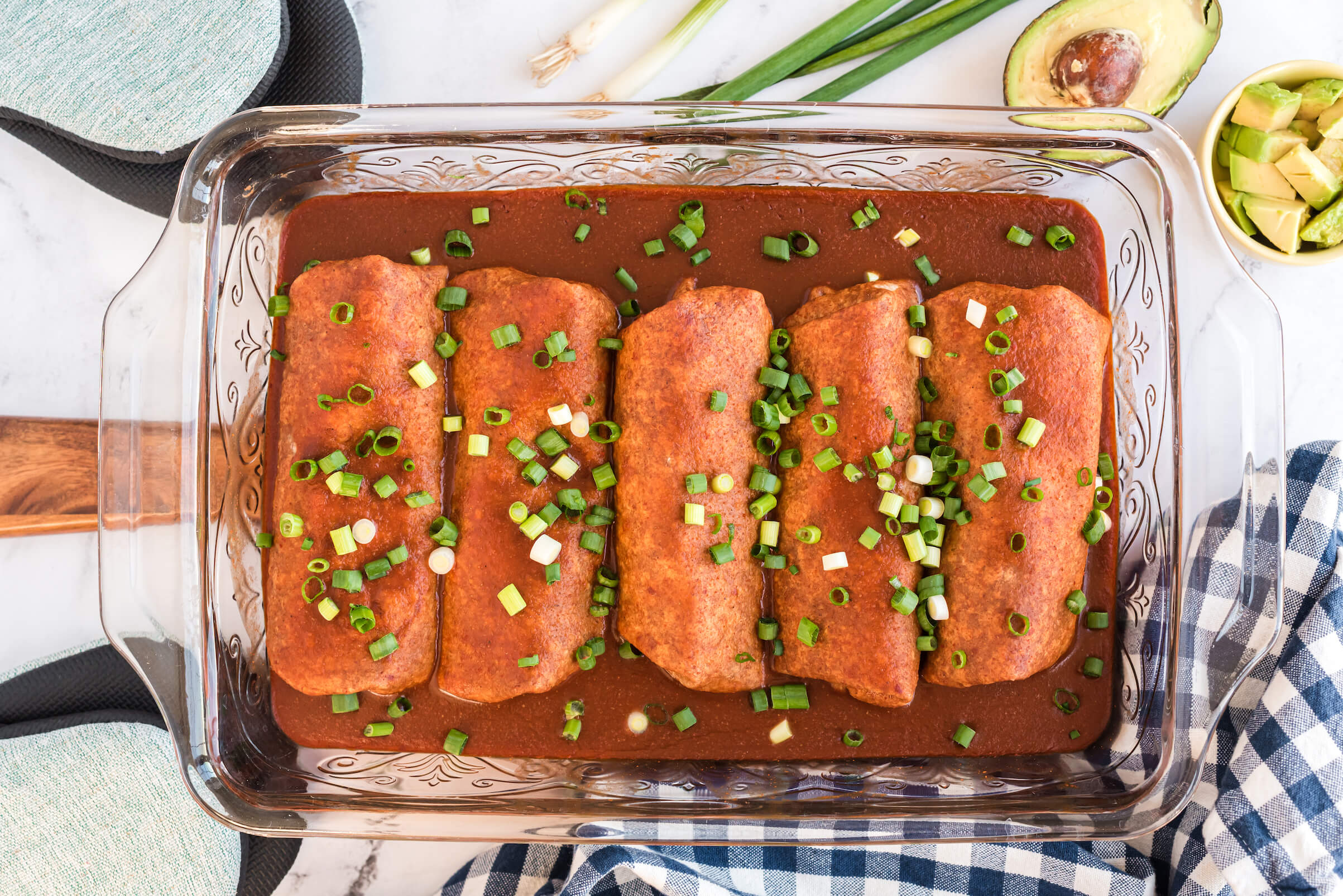
The irresistible aroma, delectable flavors, and hearty textures of these Spinach and Mushroom Enchiladas are sure to excite any enchilada enthusiast! Theyʼre perfectly paired with Smoky Black Bean Dip and robust Enchilada Sauce, creating a savory, satisfying meal that hits all the right flavor notes. Serve these delightful vegan enchiladas hot from the oven, topped with creamy avocado and an extra splash of savory sauce, for a delicious and satiating plant-based feast any night of the week!
5. Black Bean Street Tacos
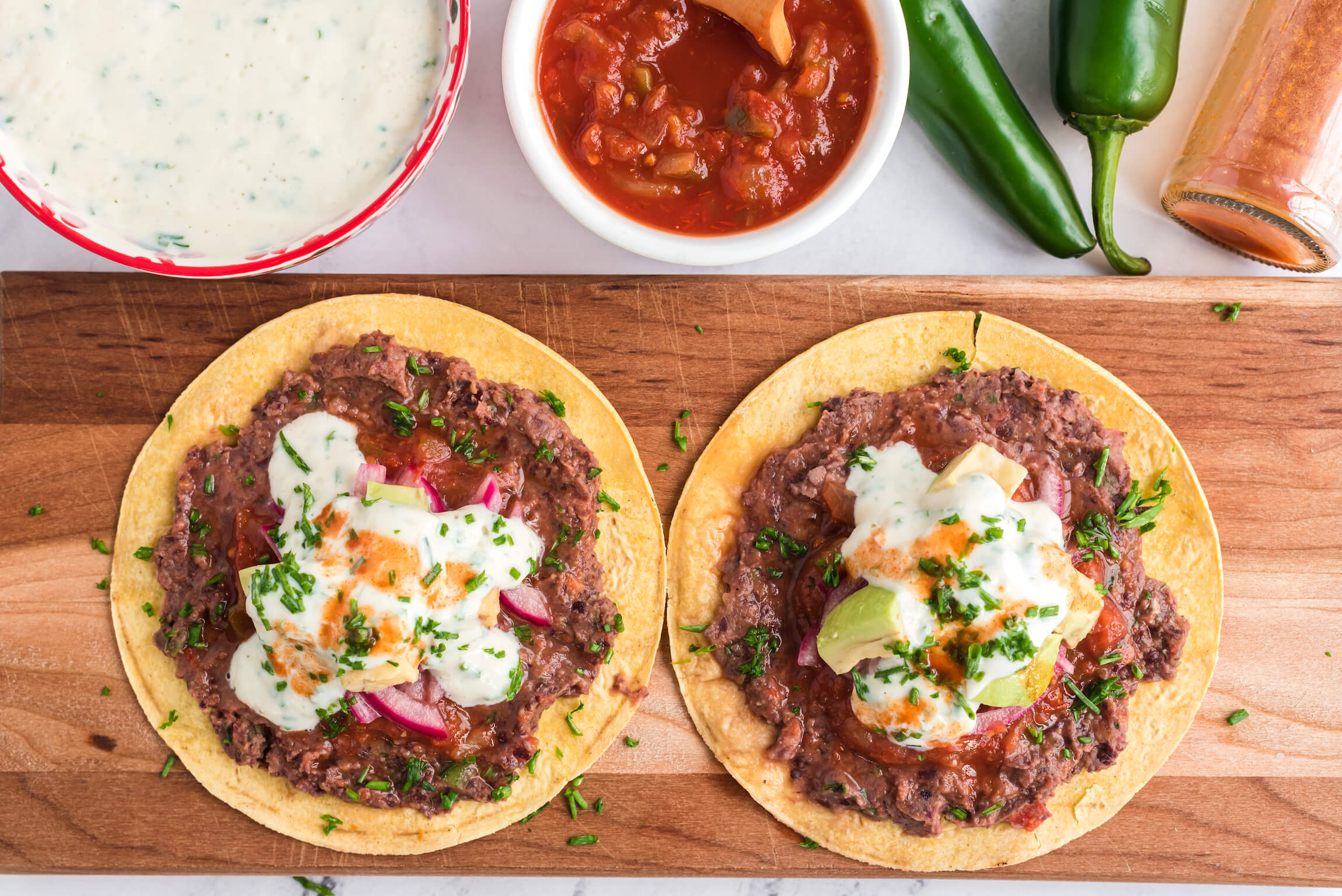
Street tacos are a central component of Mexican city life and are called antojitos, meaning “little cravings.” Theyʼre meant to be enjoyed while walking about — as a small snack. Traditionally, street tacos are made using corn tortillas, meat (beef or chicken), pico de gallo, lime juice, and cilantro. In this recipe, protein-rich black beans are spread on organic corn tortillas, with more nutritious ingredients layered on top. The result is a flavorful and nutrient-dense street taco experience — best enjoyed outside with loved ones!
6. Esquites
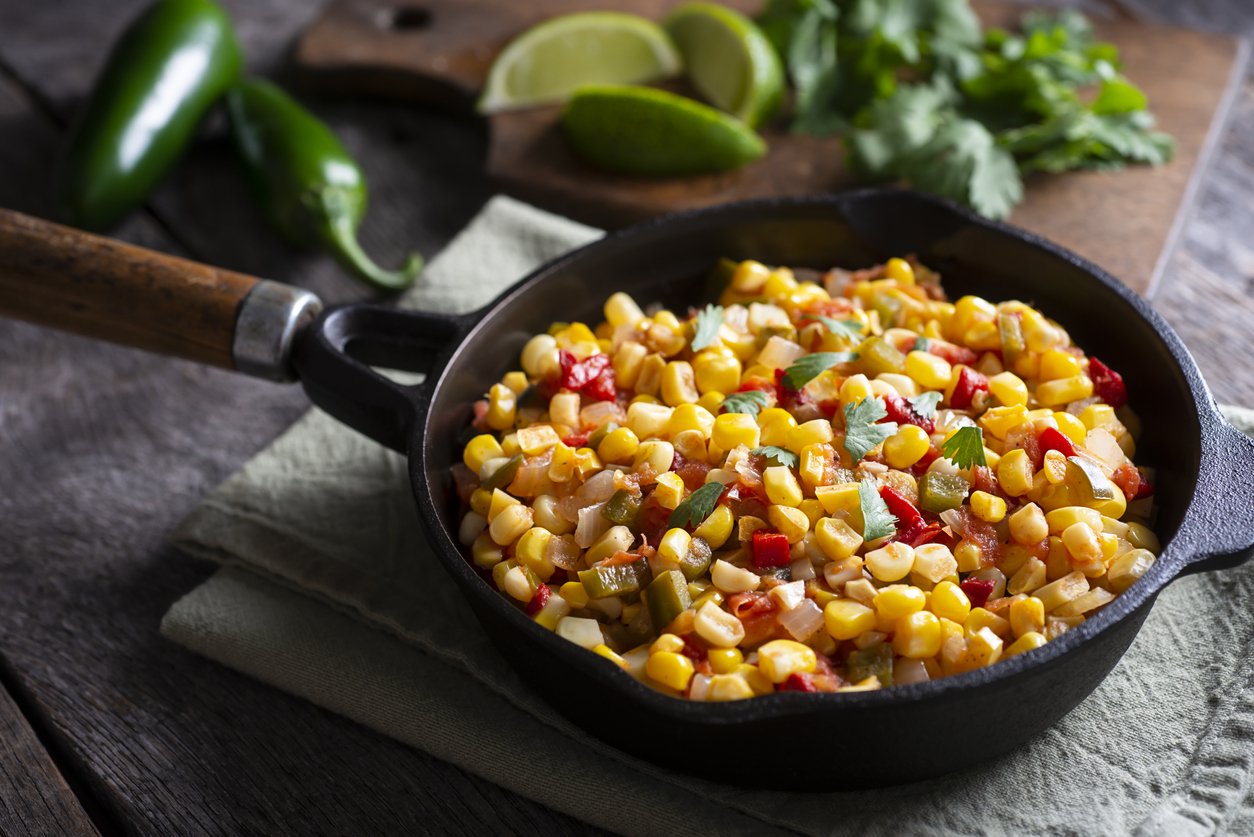
Esquites is a popular Mexican street corn salad known for its vibrant and savory flavors. This plant-based version combines sweet sautéed corn with spicy jalapeño and garlic for delightful pops of flavor. Itʼs enriched with creamy Cashew Sour Cream, savory plant-based cheese, and a splash of lime juice, adding even more layers of craveable flavor. Fresh cilantro and a sprinkle of chili powder bring freshness and a hint of smokiness, making this vegan Mexican recipe a perfect healthy snack or flavorful side dish.
7. Arroz con Leche

This vegan Arroz con Leche is a delightful twist on a beloved Mexican dessert, blending traditional flavors with plant-based ingredients. The dish starts with homemade almond milk enriched with vanilla extract and naturally sweetened with date paste. Organic brown rice is then simmered with cinnamon sticks and lemon peel, infusing it with the classic warm, spiced flavors of this cultural favorite. A sprinkle of ground cinnamon adds the final touch to this comforting Mexican dessert.
Enjoy a Taste of Mexico!
Mexican food is incredibly diverse, featuring distinctive ingredients and unique dishes. Regional variations comprise a cuisine that is far more complex and sophisticated than its representation in Mexican restaurants outside of Mexico or in fast-food joints.
In this article, weʼve shared some of the essential components for creating authentic Mexican flavors at home using meal bases, vegetables, proteins, sauces, herbs, and spices. But you donʼt have to stop there. If thereʼs a Mexican dish that you love thatʼs made with animal products, you can generally recreate its essence using plant-based ingredients.
And for more delicious plant-based Mexican recipes, check out Luz Calvo and Catriona Rueda Esquibelʼs wonderful cookbook, Decolonize Your Diet: Plant-Based Mexican-American Recipes for Health and Healing.
Tell us in the comments:
- What are your favorite Mexican or Mexican-inspired dishes?
Featured Image: iStock.com/Janna Danilova



